Phuket - Flowers and Gardens
last update: 09 May 2020
Our New Year trip for 2020 ran from late January 2020 to mid-March 2020 and involved 8 nights in Dubai and 43 nights in Phuket.
Spending 43 nights in a Phuket holiday resort meant that we were surrounded by local plants and flowers. This webpage just tries to take a look as some of those plants and flowers. I make no attempt at a scientific or intellectual analysis. I'm just interested to find out more about what we saw around us.
Having took some photographs of the local plants and flowers in our holiday resort I found it harder than I had expected to identify them. Google is great, but searches on 'plants of Phuket' yielded a variety of interesting titbits on 'Phuket waste to energy plants', something about a 'plant quarantine station' and plants for 'municipal solid waste management'. A search on 'flowers of Phuket' clearly showed that wedding packages in Phuket are a flowering business.
I though that maybe turning to 'images' in Google might help me identify some of the flowers I had photographed. However, my options on this occasion were 'wedding flowers', 'delivery', 'florist', 'flower shop', 'bouquet', etc.
So as usual with Google, it's all about asking the right question! If there is one…

So let's start with the challenge. Here we have two photographs taken of the gardens of the Angsana Laguna Resort in Phuket. The challenge is to find out a little more about a few of the more intriguing or attractive plants and flowers that we could see in the hotel grounds.

We are going to start with something really easy. Below we have an African Oil Palm (Elaeis guineensis). We know this because it was the only plant in the resort to have a label. Originally native to Africa, the species is now naturalised over many places in the Indian Ocean.
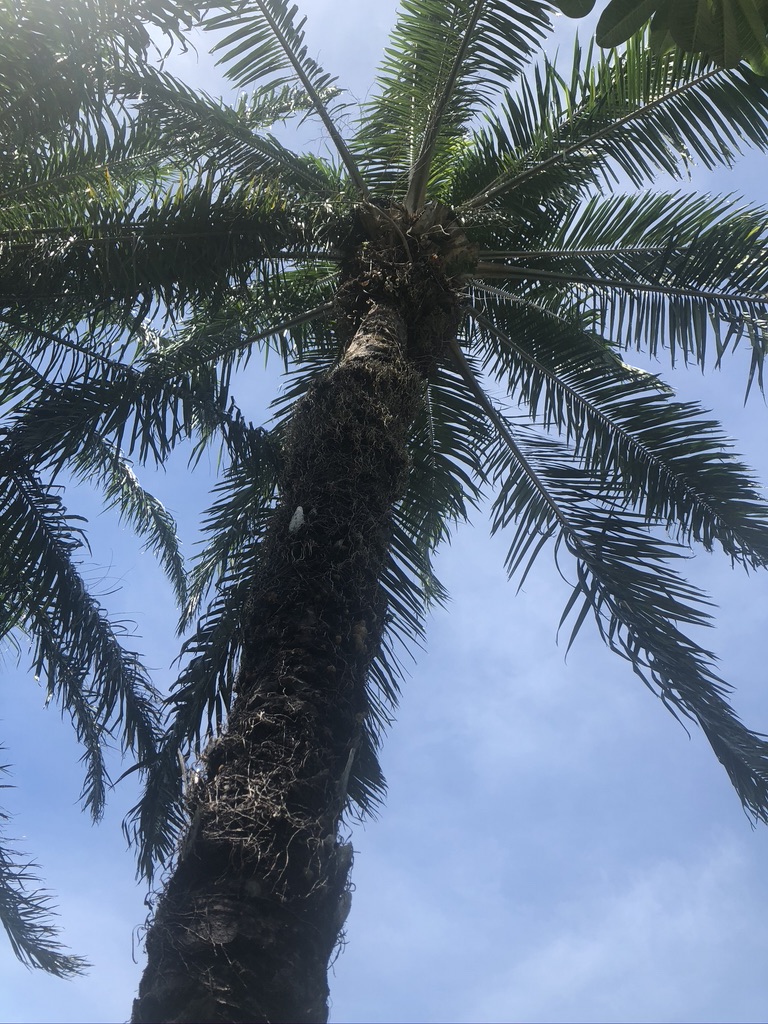
A palm tree in a holiday resort in Phuket might appear quite normal, or even banal. But the African oil palm is a perennial crop with a high oil yield, low cultivation costs, and simple maintenance. It was introduced into Thailand in 1968 from Malaysia. When we talk of high oil yield, we mean potentially four times higher than soybean and rapeseed oil. Palm oil is mostly used as a biodiesel, although it can be used in food, cleaning and beauty products. As crude oil prices rose, so did fresh fruit prices for biodiesel. The oil comes from the ripe bright red fruit that is found on top of the palm trees. So oil palm plantations were encouraged in Thailand. In fact oil palm is more profitable for Thai smallholders than either soybean or peanuts.
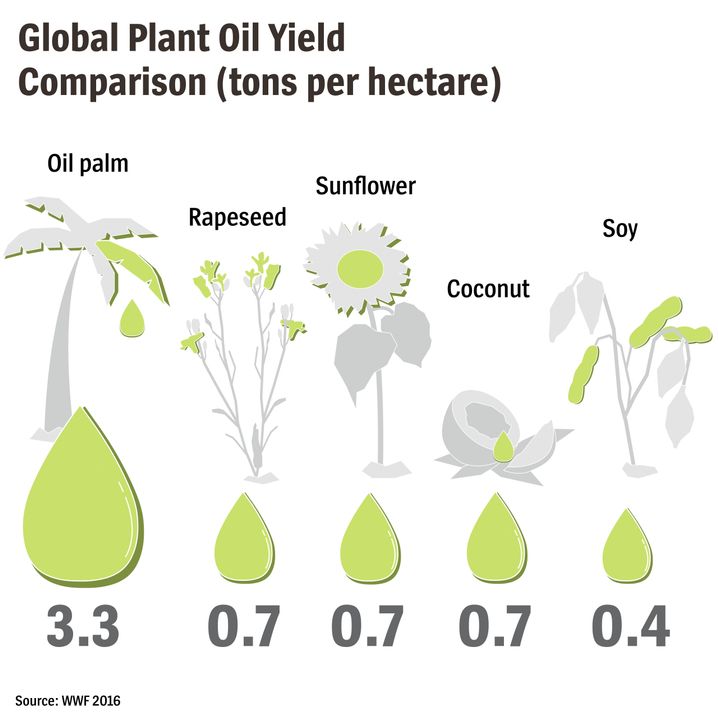
However, oil palm cultivation can also lead to deforestation, a reduction in tropical biodiversity, and even climate change. Both cutting rainforests and peat soil releases very large amounts of carbon dioxide and methane. One of the most important problems is that there are no ecologically sound alternatives to palm oil. One move is to try and reduce our reliance on fossil fuel by mixing it with a renewable resource, and palm oil is the best biofuel additive.
In addition in some countries land theft is common as large-scale plantations expand indiscriminately. In Thailand more than 80% of palm oil fields are operated by smallholders, but that does not mean that they are any more concerned by environmental considerations. One way forward is to keep palm oil but to regulate against any plant-based oil that relies on deforestation.
That was a rather dramatic first example of the plants in our local tourist resort. So let's look at a popular ornamental plant we all know, the Bougainvillea or 'paper flower'. Native from South America it likes lots of sunny, dry weather and requires little maintenance. Below we can see part of the bridge leading to our loft.
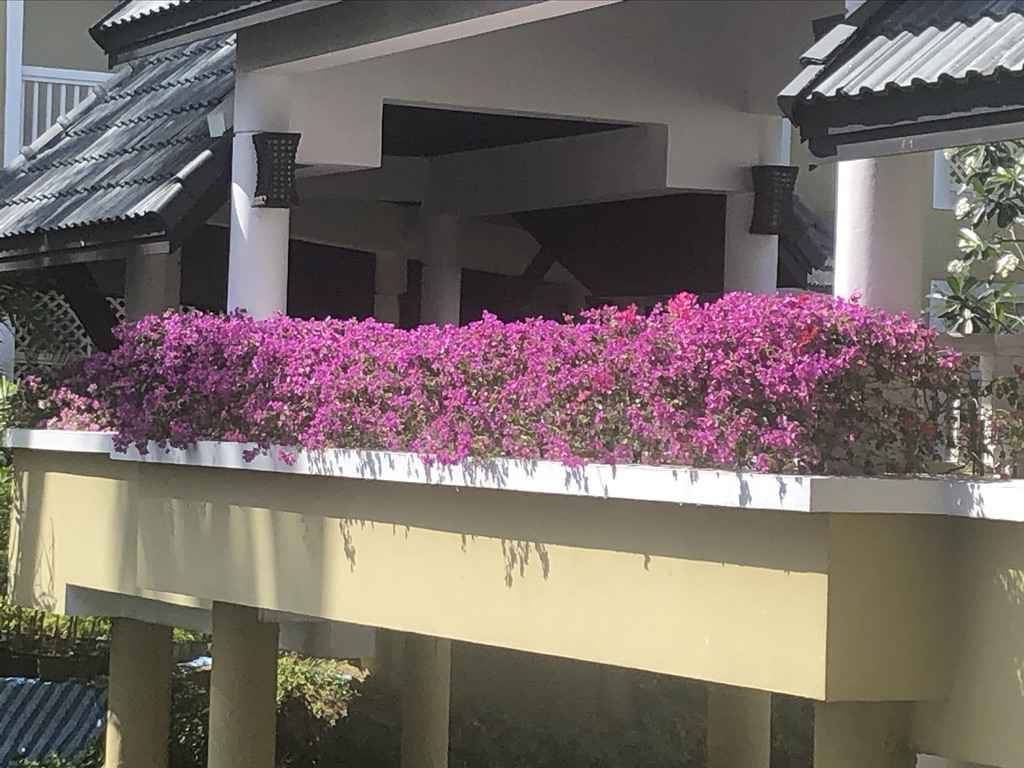
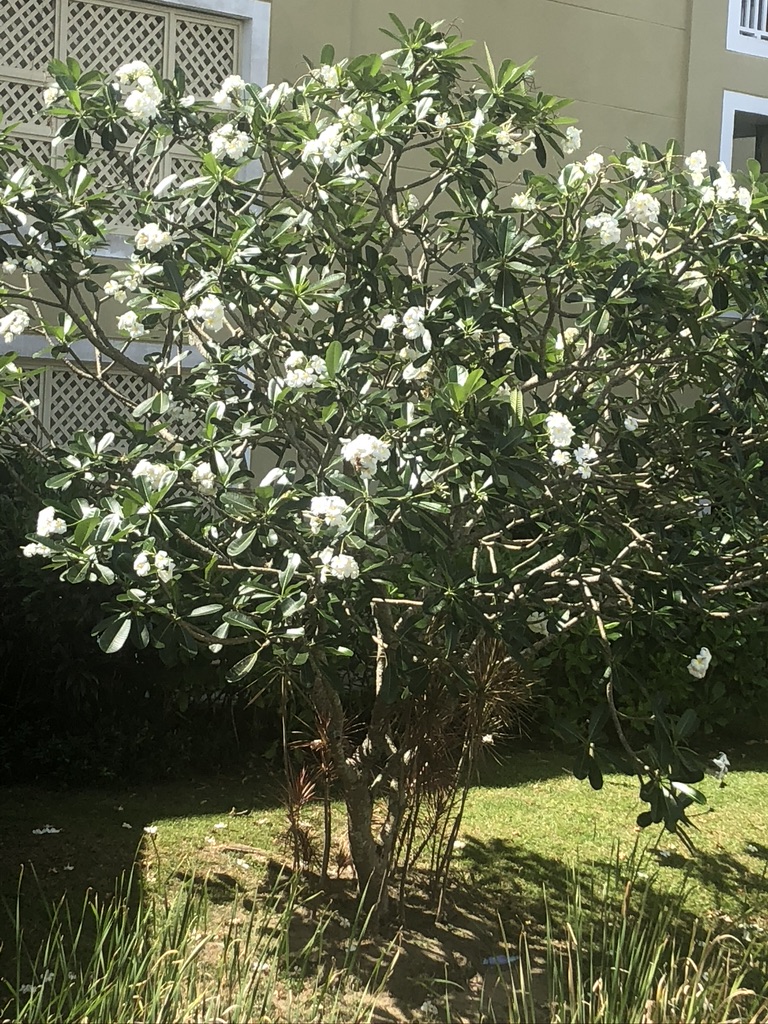
Another flower that was almost everywhere in the resort was the Leelawadee or Plumeria, and sometimes called something like 'frangipani'. This small ornamental tree is indigenous to Central America, and the flowers are used in Hawaiian garlands. In Thailand you find floating individual blooms in spas to scent and decorate water-filled bowls. The flower carries an intense fragrance, especially at dusk. One should be a bit careful since the milky sap is poisonous. It is another great plant for hotel resorts, since they like sun and are not fussy about soil.
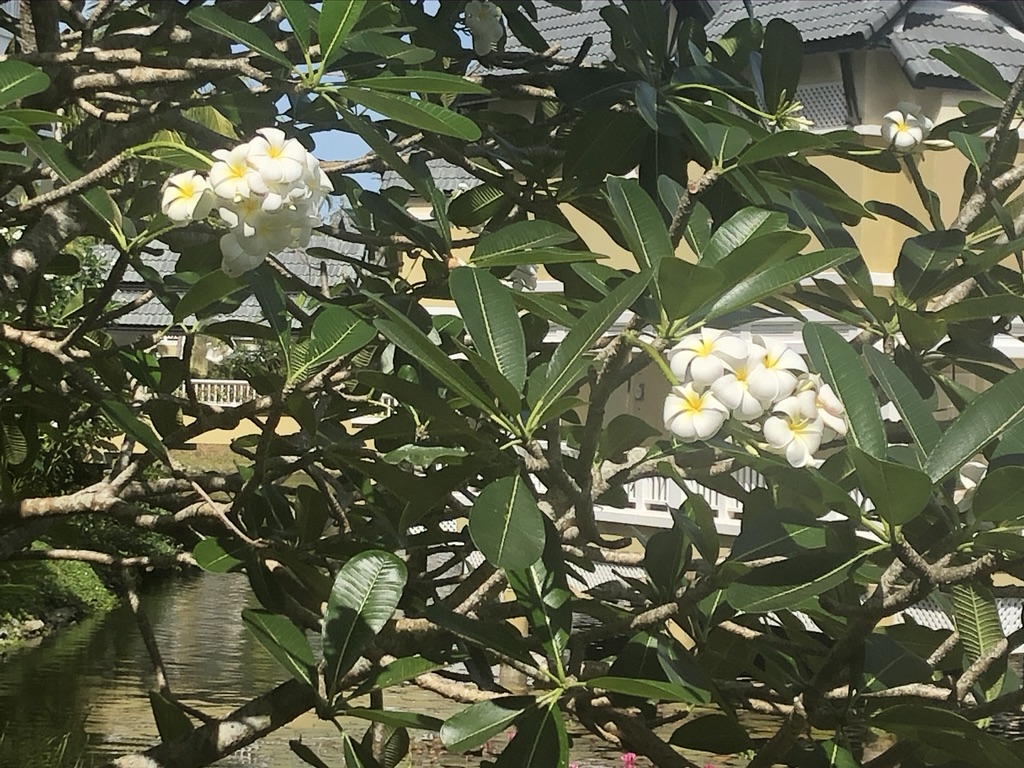
The most common variety has creamy white flowers with a yellow centre, however there are a variety of other colours, e.g. rich crimson, deep pink buds, or even peach coloured petals.
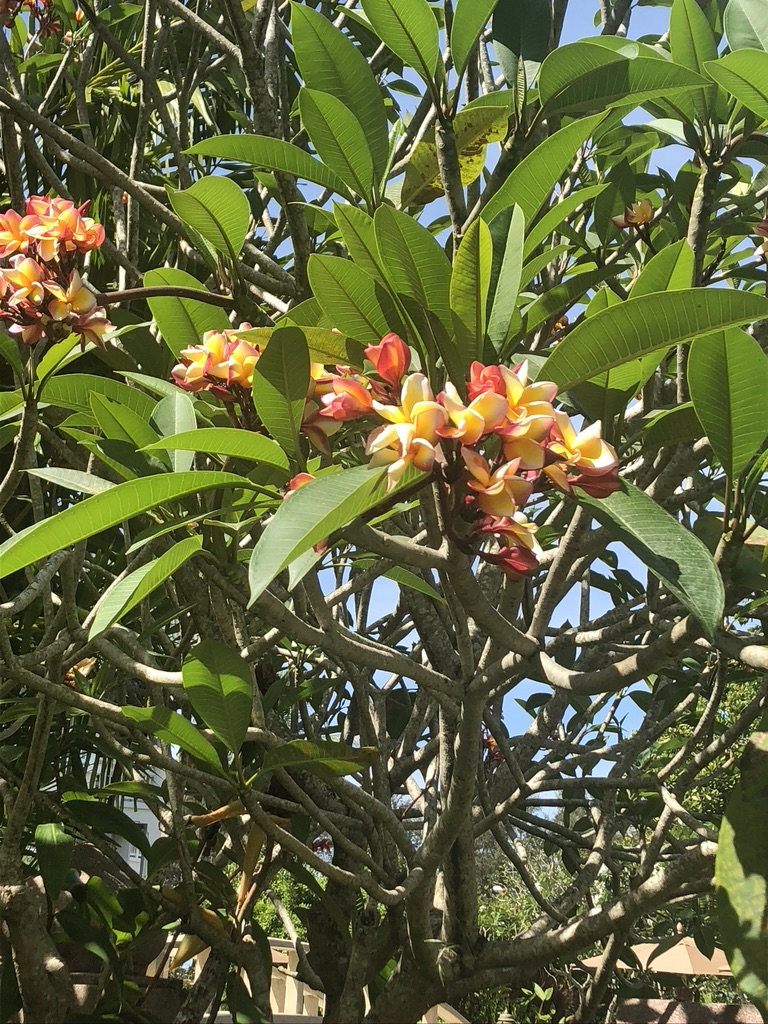
The Bougainvillea and frangipani were just outside our loft, and the third 'classical' plant also just outside our loft were these flowers.
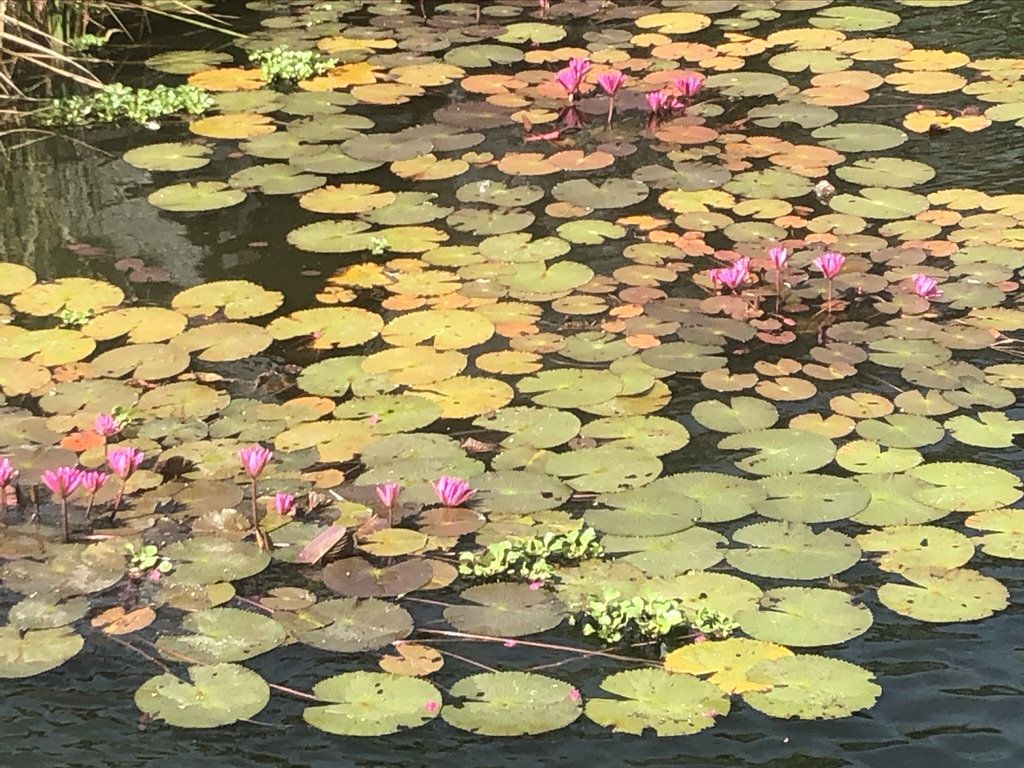
What are these flowers, lotus flowers or waterlilies? The Nelumbo is often called 'lotus' even if the name is also used for other plants, and the only species native to Asia is the Nelumbo nucifera. Now many people will know that there exists also the Nymphaea, or waterlilies. Both float on the surface of water, but the flower of the waterlily also floats on the surface, whilst the flower of the lotus rises above the water's surface. So are these lotus flowers? The lotus will often have bigger leaves and the lotus flower is larger than a waterlily flower. In fact there is a tropical variety of waterlily where the leaves float on the surface but their flowers rise above the surface up to 15 cm or more. This type of waterlily can have variegated leaves mottled with dark purple. This video explains the difference between lotus and waterlilies.
Below I think we have another odd named plant, the Bitter Ginger (Zingiber zerumbet). The plant originated in Asia, and is also called shampoo ginger or pinecone ginger. The name shampoo ginger comes from the milky substance found in the cone. The clear fragrant juice in the mature flower head is used to soften and add shininess to hair. Also the root is used as a food flavouring, and the root extract is a valuable herbal medicine.
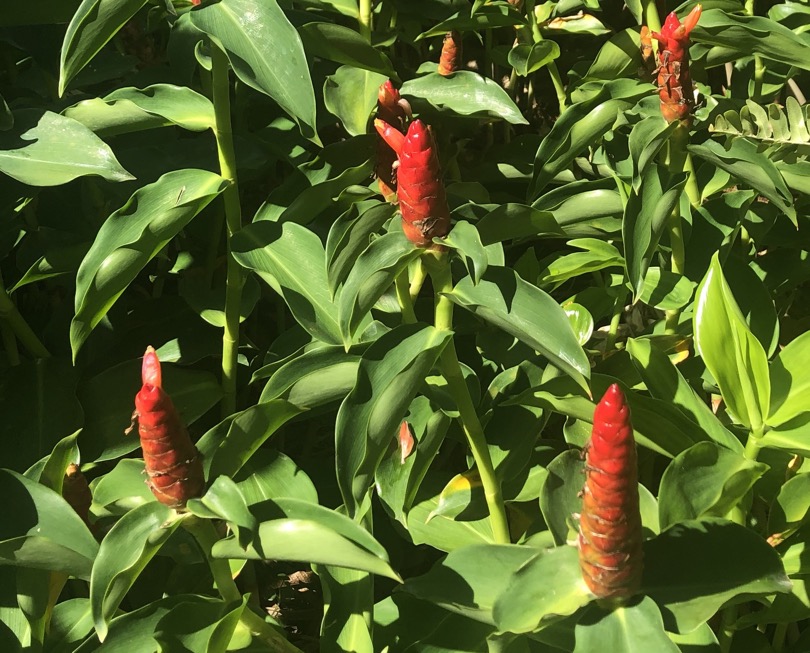
Keeping with the red flower theme below we have Ixora, with its cluster of star-shaped flowers. This is a tropical Asian flower that is often used in Hindu worship. Again the Ixoras are hardy, withstand full sun, and make great hedges and borders.
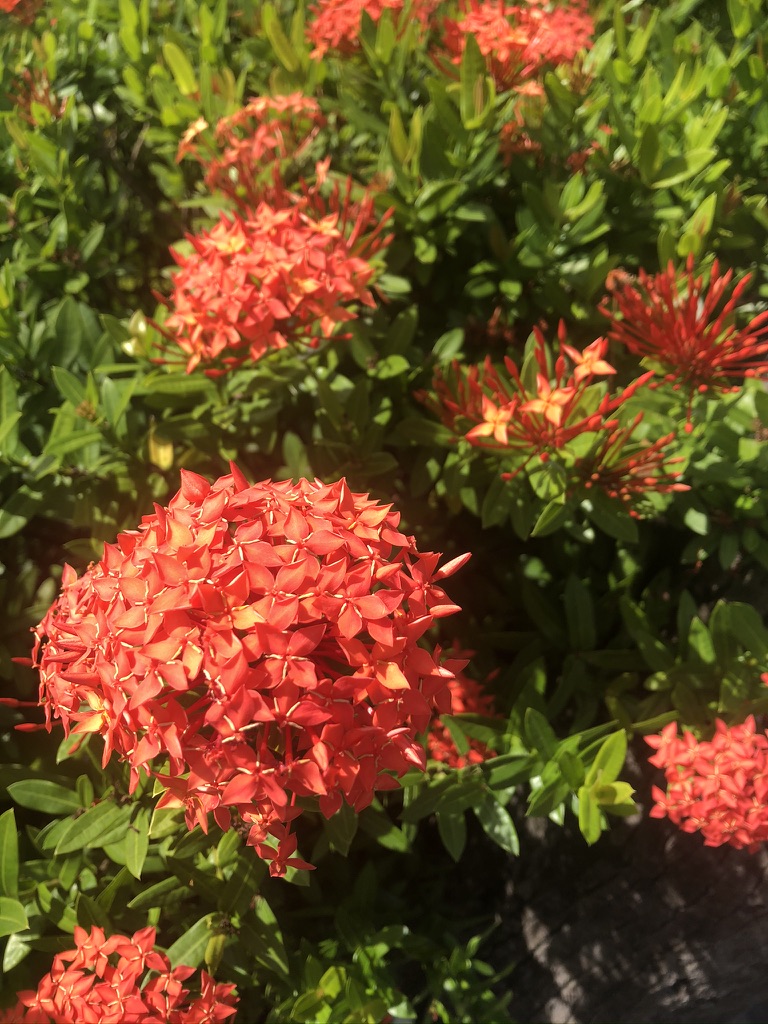
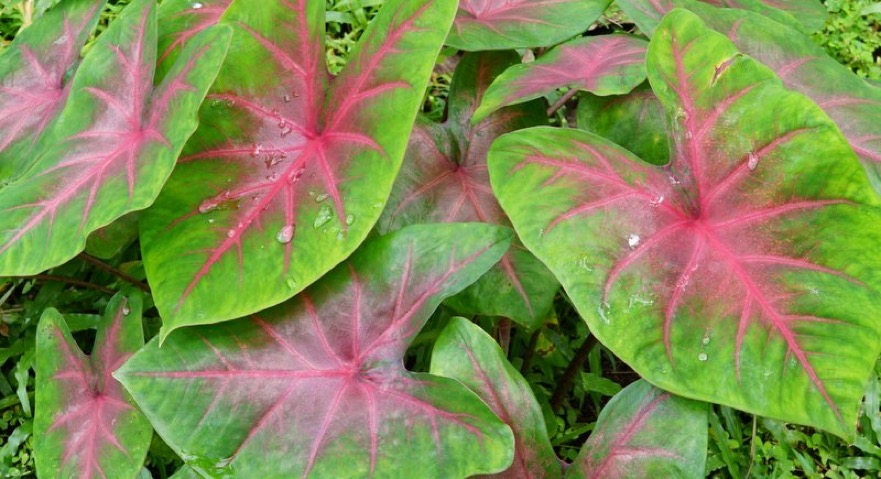
You find Caladium in a lot of gardens because the dark green deeply-veined leaves provide a nice contrast. As mentioned in the Wikipedia article they also have very evocative common names, such as 'heart of Jesus', 'angel wings', and 'elephant ear'. They are easy to grow, require moderate watering, and prefer shade.
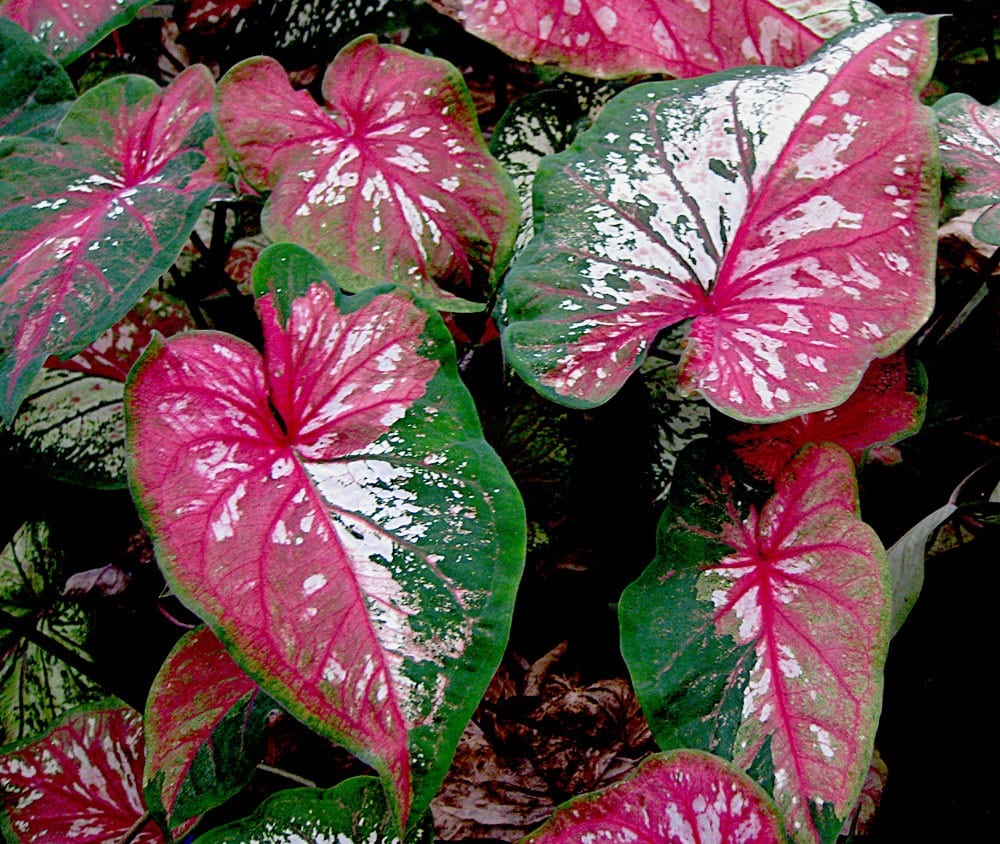
The resort garden was full of tropical green shrubs and plants, most of which kind of look familiar, but I could not source a name. One that I could identify, because of its distinctive look, is the Ravenala, otherwise known as the traveller's palm. The name comes from the fact that the sheaths of the stems hold rainwater, which could be useful for a traveller.

I did manage to identify a couple of other 'great' plants, firstly we have the Dracaena loureiri and then a Livistona.

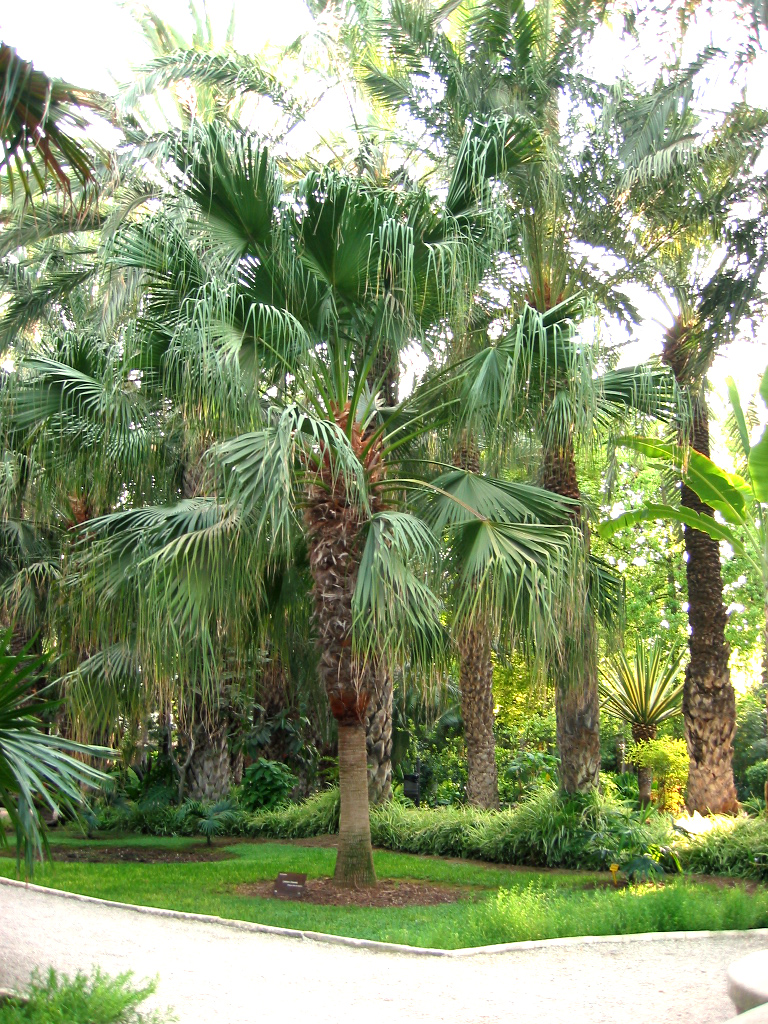
In terms of boarder plants along pathways, etc., there was quite a mix, but I managed to identify two varieties. The first was a type of Schefflera called the 'umbrella tree' but in a form of multi-coloured green ground cover.

The other was, I think, the Jatropha integerrima, commonly known as spicy jatropha.

What was surprising was that in one part of the resort, near one end of the large swimming pool, were several mangrove plants. I've no idea about its name, etc., but I was just (pleasantly) surprised to see it inside a resort complex.

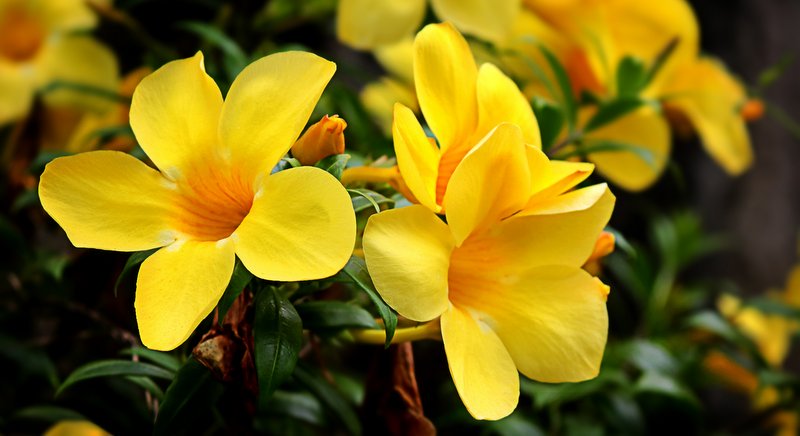
Back to some flowers, we found the lots of Allamandas (above) which can easily be confused with Cassia fistula (below). The Allamandas were native to the Americas, but now grow almost everywhere its warm, and they like to be near water and in open, sunny areas.
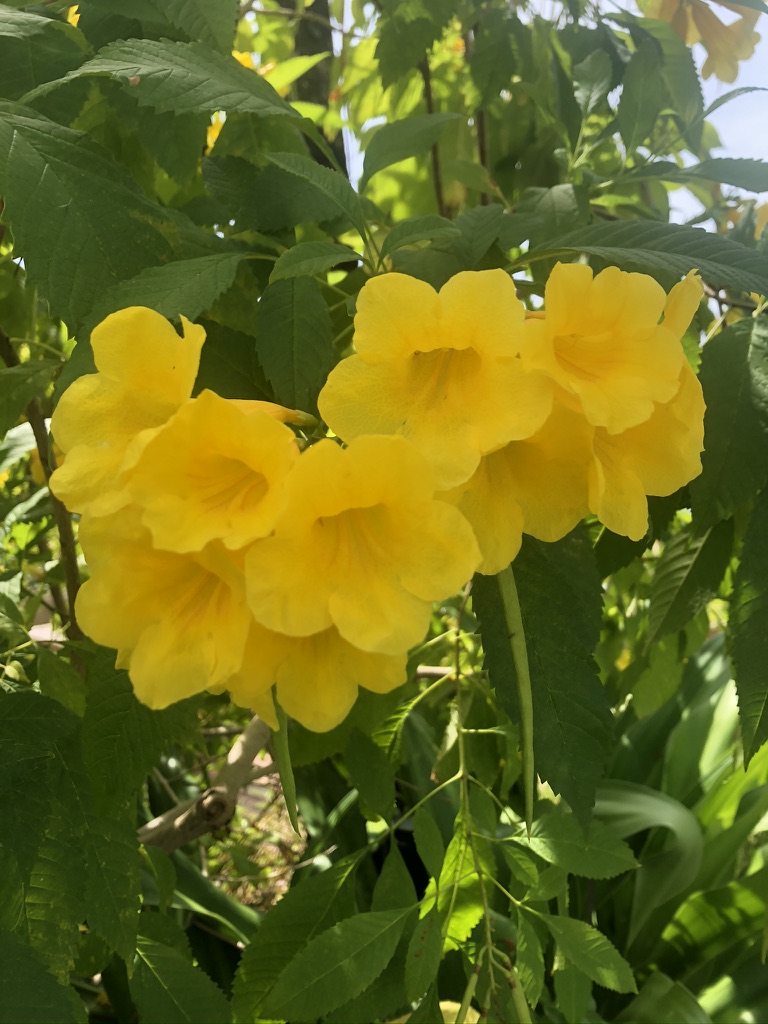
The Cassia fistula is found in the Indian sub-continent and Southeast Asia, and its the national tree and national flower of Thailand. As you might have guessed it grows well in dry climates and in the full sun. It's also slightly salt-tolerant, useful when it's near the sea.
The final contribution on this page dedicated to the resort garden and the flowers and plants found there, is on orchids. Thailand is home to around 1300 species and 180-190 genera of wild and cultivated orchid, and the export of cultivate orchid plants and flowers generates nearly $200 million annually (and they only started to export orchids in 1965). Arguably Thailand is the world's largest orchid flower exporter (about 80% is the variety Dendrobium). The key is to have a temperature range of 25°C to 33°C and a humidity level of at least 75%.


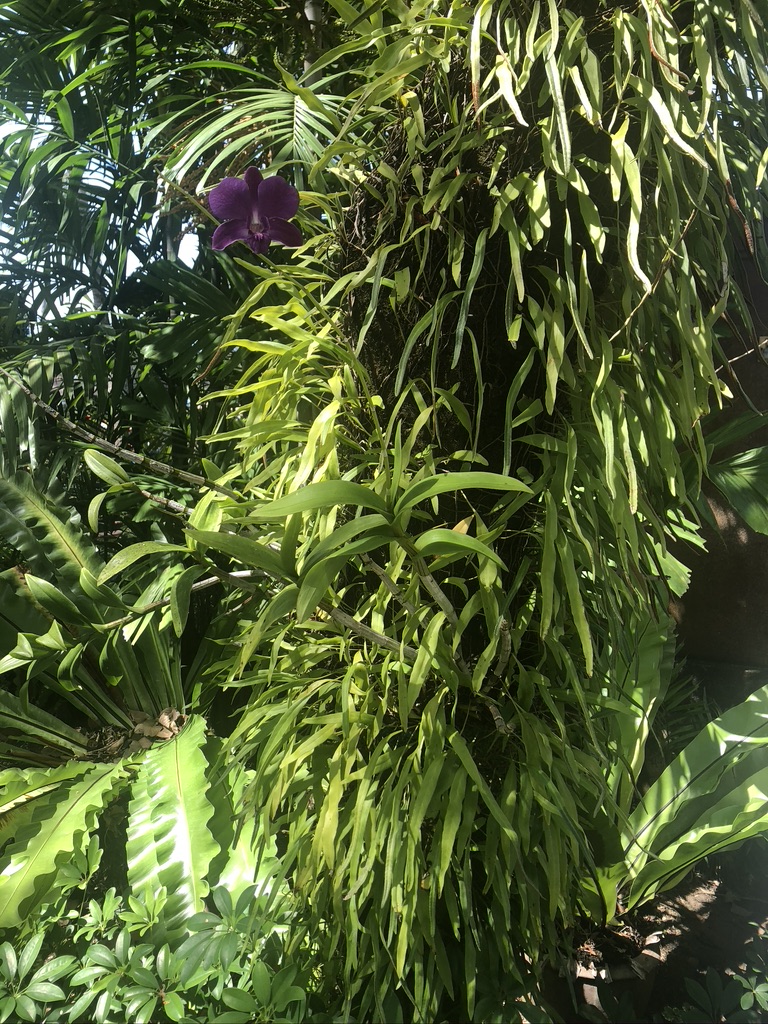
As we can see above, the orchids in the resort were all growing on trees. The technique is quite simple and decorative. You just place the roots of the orchid on or around the tree truck, so that the roots will start to cling to the host. They can be attacked with some cotton string that will fade in a few weeks and decompose in about a year. In fact most orchids in the wild grow on trees. Part of the trick is that growing on the truck means that they get more sunlight than if they were trying to grow in the undergrowth around a tree, but they are still protected from intense sunlight that would dry the root. Another reason for orchids living on a host tree is that they avoid nibbling predators and favour pollinating insects. Some varieties don't like dry roots, and it's difficult to keep them moist enough when growing. Check out this video.
References
The Thai Garden Design has a great list of plants used for gardens in Thailand
Threatened Plants In Thailand
A Reflection of Thai Culture in Thai Plant Names
Medicinal Plants of Thailand